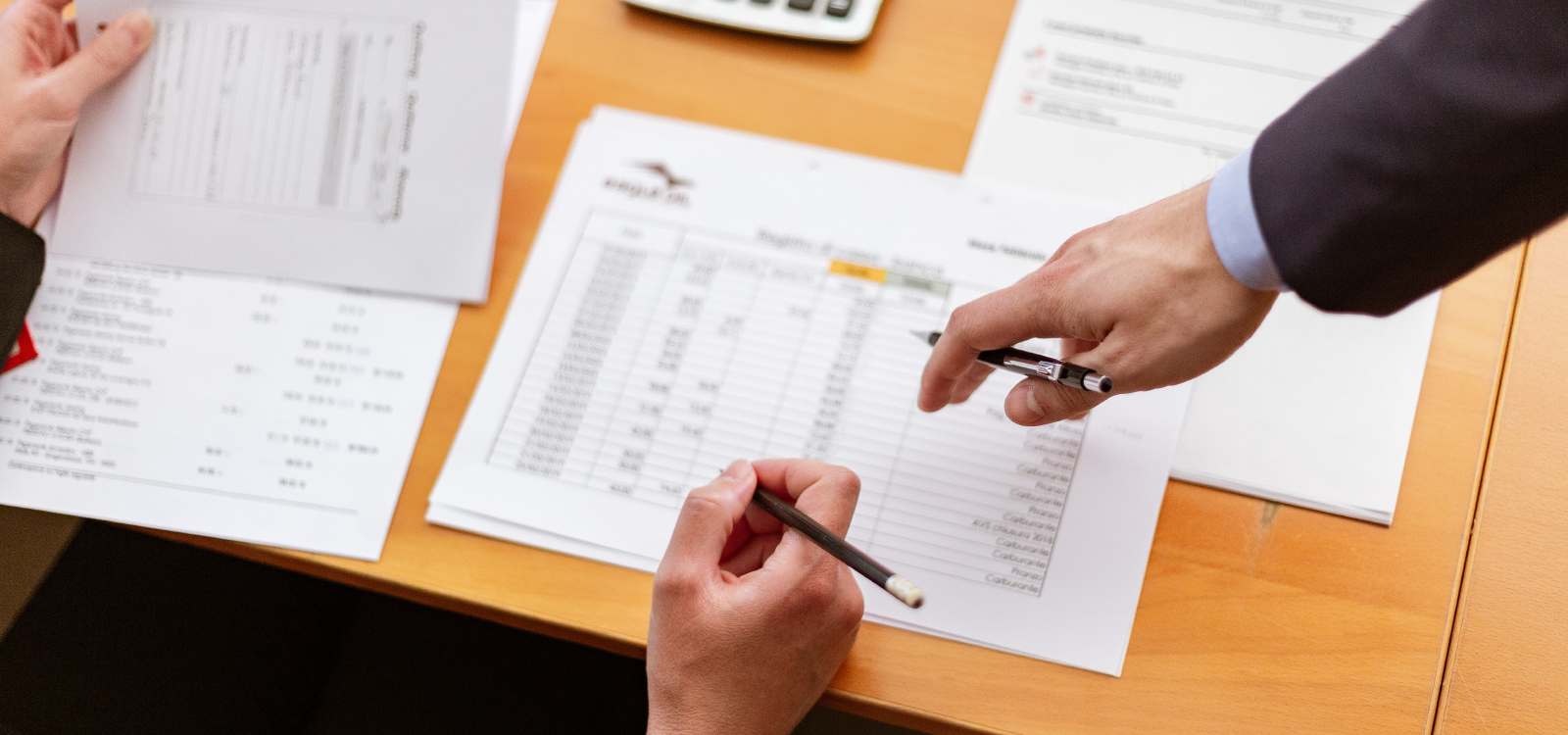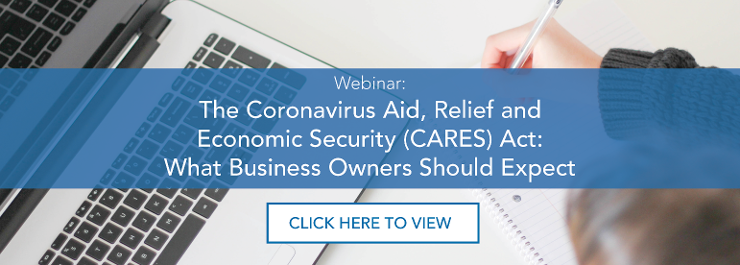Frequently Asked Questions about the Paycheck Protection Program Answered

All information published represents our views at the time it was produced. Access all of Warren Averett’s Paycheck Protection Program by date on our COVID-19 PPP Resource Page.
Disclaimer: This article reflects our views at the time this article was written and should be used as a reference only. We recommend that you talk to your Warren Averett advisor and also to consult with your lender regarding your situation. Please note that Warren Averett is not an Agent under the Paycheck Protection Program loan program (“PPP”). Warren Averett does not provide loan packaging services or guarantee qualification under the PPP or any loan administered by the U.S. Small Business Administration 7(a) loan program.
On March 27, 2020, the president signed the Coronavirus Aid, Relief and Economic Security Act (CARES Act) into law.
The cornerstone of the CARES Act for small businesses (those with no more than 500 employees) is the Paycheck Protection Program (PPP). The PPP authorizes up to $349 billion of federally-guaranteed loans to qualifying small businesses. These loans are designed to be forgiven if employers keep employees on their payroll and spend the loan proceeds on qualifying expenses. Through private lenders, PPP loans will be administered through the U.S. Small Business Administration’s (SBA) 7(a) loan program.
What is an Economic Injury Disaster Loan (EIDL)?
An EIDL loan, which is also referred to as an SBA 7(b)(2) loan or an SBA disaster loan, is available for certain entities that have been substantially impacted by COVID-19.
As part of the CARES Act, EIDL loan applicants can receive a $10,000 emergency grant within three days of application, through December 31, 2020. The $10,000 emergency grant does not have to be repaid as long as the funds are used for qualifying expenses. If an applicant also obtains a PPP loan, the $10,000 emergency grant will be deducted from the loan forgiveness amount on the PPP loan.
EIDL loans are applied for by completing an application on the SBA’s website. The maximum amount that can be borrowed under the EIDL loan program is $2,000,000, with up to a 30-year term, at an interest rate of 3.75% for businesses and 2.75% for nonprofits. Personal guarantees are required for loans in excess of $200,000 and collateral is required for loans in excess of $25,000 (subject to certain limitations).
Can a business apply for both an EIDL loan and a PPP loan?
Businesses are not allowed to obtain an EIDL loan and a PPP loan if the funds are used for the same purpose. The CARES Act contains a “duplication” rule that prevents borrowers from double dipping. An applicant for a PPP loan that receives an EIDL loan from January 31, 2020, to April 3, 2020, is eligible for a PPP loan as long the EIDL proceeds were not used for payroll costs (defined below). If an applicant receives an EIDL loan from January 31, 2020 to April 3, 2020, and uses the proceeds for payroll costs, the applicant will be required to refinance the EIDL loan into the PPP loan.
Who is eligible for a PPP loan?
Any business, nonprofit organization1, self-employed individual, independent contractor or sole proprietorship that has “been adversely impacted by COVID-19” will be eligible if that entity:
- Does not employ more than 500 employees, including full-time and part-time employees (Note: SBA Affiliation rules apply, with certain exceptions)2; OR
- Meets the existing SBA size standard for its industry, AND
- Was in operation on February 15, 2020 and paid employees’ salaries and payroll taxes or paid independent contractors as reported on IRS Form 1099.
What are the borrower requirements?
An impacted borrower is required to make a good faith certification that the uncertainty of current economic conditions makes the loan request necessary to support ongoing operations, acknowledge that the funds will be used to retain workers and maintain payroll or make mortgage payments, lease payments and utility payments and certify no “duplication;” no double dipping by applying for multiple loans for the same purpose.
No personal guarantee or collateral is required, and the “credit elsewhere” requirement is waived.
How is the loan amount determined?
The loan amount is the lesser of:
- 2.5 times the company’s average3 monthly payroll costs incurred in the 2019 calendar year or one-year period before the loan is made, plus the amount of any EIDL required to be refinanced; OR
- $10,000,000.
Payroll costs include: salary, wages, commissions or similar compensation; cash tips or the equivalent; vacation, parental, family, medical or sick leave; allowance for separation or dismissal; payment for the provision of employee benefits consisting of group health care coverage, including insurance premiums and retirement; payment of state and local taxes assessed on compensation of employees; and for an independent contractor or sole proprietor, wage, commissions, income or net earnings from self-employment or similar compensation.
The following are excluded from payroll costs: cash compensation of an employee in excess of $100,000, sick leave paid under the Families First Coronavirus Relief Act for which a credit is allowed and compensation of an employee whose principal place of residence is located outside of the United States.
Does the compensation in excess of $100,000 exclusion apply to salary or salary plus non-cash employee benefits?
According to an FAQ released by Treasury on April 6, 2020, the exclusion of compensation in excess of $100,000 annually applies only to cash compensation, and not to non-cash benefits, including: employer contributions to defined-benefit or defined-contribution retirement plans, payment for the provision of employee benefits consisting of group health care coverage, including insurance premiums and payment of state and local taxes assessed on compensation of employees.
Do borrowers reduce their payroll costs by federal income tax withholding and FICA?
No. According to an FAQ released by Treasury on April 6, 2020, under the Act, payroll costs are calculated on a gross basis without regard to (i.e., including subtractions or additions) federal taxes imposed or withheld, such as the employee’s and employer’s share of Federal Insurance Contributions Act (FICA) and income taxes required to be withheld from employees. As a result, payroll costs are not reduced by taxes imposed on an employee and required to be withheld by the employer, but payroll costs do not include the employer’s share of payroll tax. For example, an employee who earned $4,000 per month in gross wages, from which $500 in federal taxes was withheld, would count as $4,000 in payroll costs. The employee would receive $3,500, and $500 would be paid to the federal government. However, the employer-side federal payroll taxes imposed on the $4,000 in wages are excluded from payroll costs under the statute.
Are payments to an independent contractor included in the borrower’s payroll costs?
No. According to an FAQ released by Treasury on April 6, 2020, any amounts that an eligible borrower has paid to an independent contractor or sole proprietor should be excluded from the eligible business’s payroll costs. However, an independent contractor or sole proprietor will itself be eligible for a loan under the PPP, if it satisfies the applicable requirements.
How does the loan forgiveness work?
For the eight-week period (covered period) beginning on the loan origination date, borrowers are eligible for loan forgiveness if the loan proceeds are spent on eligible expenses and the borrower meets certain requirements related to the retention of employees and decreases in employee pay rates. It is important to note that the PPP Interim Final Rule published by Treasury on April 2, 2020, provides that not more than 25 percent of the loan forgiveness amount may be attributable to non-payroll costs.
Expenses eligible for loan forgiveness include:
- payroll costs;
- health benefits;
- rent;
- utilities; and
- mortgage interest on real or personal property debt obligations4.
During the covered period, the amount that may be forgiven will be proportionately reduced if the company does not maintain the average number of employees5 it had before the crisis began or if it reduces salaries or wages of an employee who makes less than $100,000 by more than 25%. Employers will not be penalized if they eliminate the decrease in employee headcount and/or wages by June 30, 20206.
The loan forgiveness is not taxable income for federal income tax purposes.
Any portion of the loan not forgiven will have a term of two years, with an interest rate of 1%. Lenders are required to defer interest and principal from the loan origination date for a period of six months.
When will this program go into effect?
Currently, the PPP is open for applications through June 30, 2020. Small businesses and sole proprietorships were able to start filing applications beginning April 3, 2020. Starting April 10, 2020, independent contractors and self-employed individuals can begin applying. We suggest that all businesses and self-employed individuals impacted by the COVID-19 pandemic consult their bankers or lenders as soon as possible to learn more and begin the application process.
We will continue to monitor new developments as guidance is released, and will keep you updated on any changes. If you have any questions about how this will affect you or your business, please contact your Warren Averett advisor or complete this form to have a member of our team reach out to you.
Click here to view the Treasury Department’s list of frequently asked questions on the PPP.
Footnotes
- A tax-exempt nonprofit organization described in section 501(c)(3) of the Internal Revenue Code (IRC), a tax-exempt veterans organization described in section 501(c)(19) of the IRC, Tribal business concern described in section 31(b)(2)(C) of the Small Business Act, or any other business; A nonprofit entity eligible for payments under a state plan under the Social Security Act or a waiver under such plan is not eligible.
- Allows businesses in certain industries to use a 500-employee test per location; SBA affiliation rules apply; SBA affiliation rules are waived for businesses in the hospitality and restaurant industries, franchises that are approved on the SBA’s Franchise Directory, and small businesses that receive financing through the Small Business Investment Company (SBIC) program.
- Seasonal employers shall use the average total monthly payroll for the 12-week period beginning February 15, 2019, or if elected, the period beginning March 1, 2019 and ending June 30, 2019.
- Includes: Any debt incurred during ordinary course of business before February 15, 2020 (mortgage on real or personal property), utilities in place before February 15, 2020, leases in force before February 15, 2020.
- The numbers of employees required to be maintained is based on the average number of employees from the period February 15, 2019 through June 30, 2019, or if elected by the company, January 1, 2020 through February 29, 2020, with certain exceptions.
- This provision was included so that employers would not be penalized for having to lay workers off or reduce wages before the enactment of the Act, if they are able to rehire and/or increase wages by June 30, 2020.
This blog was originally published on March 27, 2020 and was most recently updated on April 7, 2020.

